Our Summer Pilgrimage to BAPS Akshardham, Robbinsville: A Journey of Awe, Devotion, and Cultural Pride
By Raj Shah
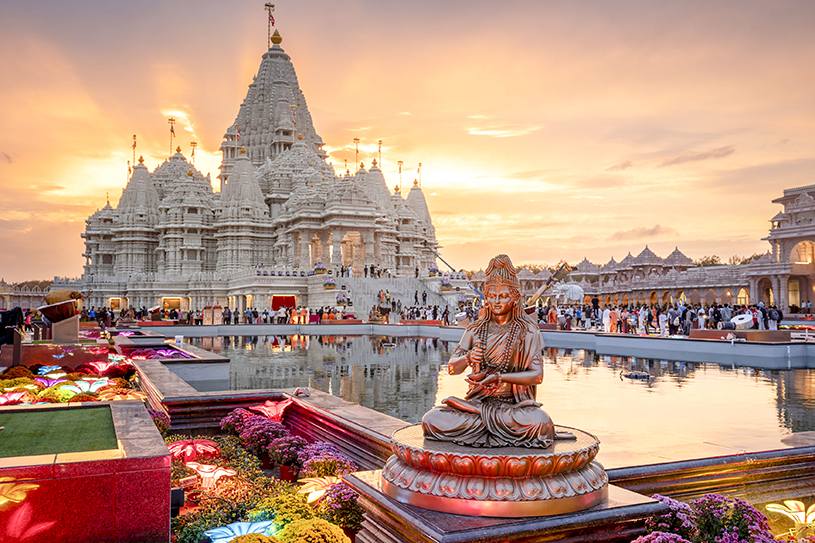
My wife Aruna and I went on a trip this summer that was more than just travel. It wasn’t just a vacation or temple visit. It was a spiritual homecoming. We experienced a renewal of our faith. It served as a profound reminder of the significance of belonging to a timeless culture that continues to inspire, despite being thousands of miles away from India.
We visited the awe-inspiring BAPS Swaminarayan Akshardham Mandir in Robbinsville, New Jersey—the largest Hindu temple in the United States and one of the most spectacular expressions of Hindu architecture, art, and devotion anywhere in the world.
A Monument of Devotion Built by Volunteers
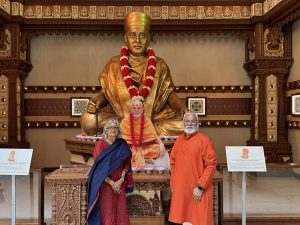 The BAPS Swaminarayan Akshardham, constructed between 2011 and 2023, is more than a temple—it is a testament to the power of faith and selfless service. It was built not by contractors or government grants, but by the loving hands of 12,500 volunteers from across the U.S., who offered millions of hours of their time, energy, and devotion.
The BAPS Swaminarayan Akshardham, constructed between 2011 and 2023, is more than a temple—it is a testament to the power of faith and selfless service. It was built not by contractors or government grants, but by the loving hands of 12,500 volunteers from across the U.S., who offered millions of hours of their time, energy, and devotion.
These were not just temple-goers. Many were professionals—engineers, doctors, software developers, business owners, and students—who set aside their careers temporarily to build something sacred for the next generation. This was karma yoga in action.
When we learned that some of these volunteers took an entire month off from their high-paying jobs just to offer seva (selfless service), we were both humbled and moved. Who does that in today’s world? The answer is simple: those who are deeply inspired by the teachings and legacy of Pramukh Swami Maharaj and Mahant Swami Maharaj and the values of the BAPS Swaminarayan tradition.
The Grand Scale and Sacred Design
The Akshardham Mandir, situated on a sprawling 183-acre campus, stands tall and proud, boasting dimensions of 255 feet wide, 345 feet long, and 191 feet high. Its grand design follows the ancient Hindu architectural scriptures known as the Shilpa Shastras, which govern the science of temple construction.
The temple includes
- 1 central sanctum and 12 sub-shrines
- 9 shikhars (spire-like towers) and 9 pyramidal shikhars
- 13 sanctums housing divine murtis (sacred images)
- The largest elliptical stone dome ever built in traditional architecture
As we stood at the base of the Mandir and looked up, it was impossible not to feel the sacred geometry—the balance between the earthly and the divine, the physical and the spiritual.
Carved Culture: A Living Library in Stone
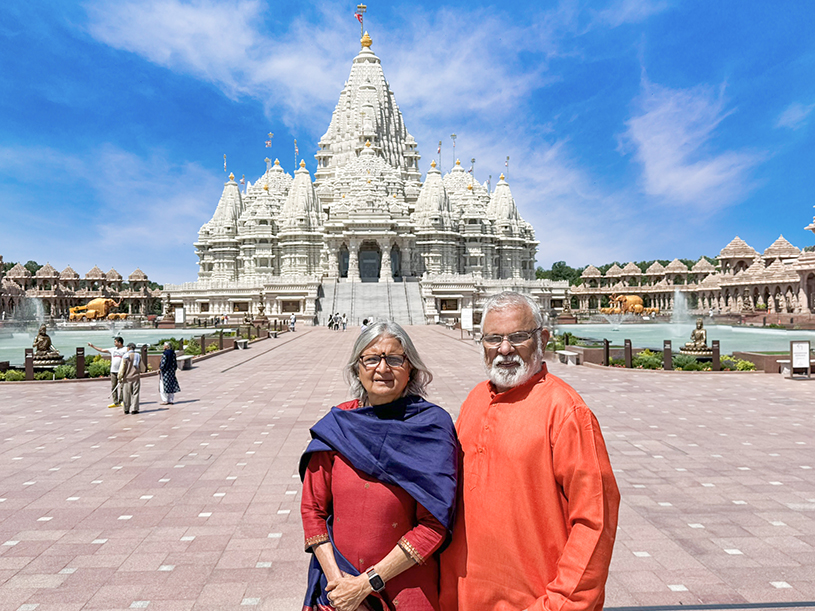 Every inch of Akshardham is rich with symbolism, history, and spiritual wisdom. It’s as though the entire cultural and moral fabric of Hinduism has been carved into stone.
Every inch of Akshardham is rich with symbolism, history, and spiritual wisdom. It’s as though the entire cultural and moral fabric of Hinduism has been carved into stone.
- 10,000 statues and decorative elements fill the walls and pillars.
- 151 carved Indian musical instruments and numerous classical dance forms adorn the exteriors and domes.
- 338 symbolic depictions of Hindu stories illustrate teachings from the Ramayana, Mahabharata, and Puranas.
- 78 statues of saints reflect the soul of dharmic living.
- 30 stone murals depict eternal values like satya (truth), daya (compassion), and tyag (sacrifice).
- 548 intricately carved pillars and 235 mandapams (canopied halls) provide a visual and spiritual feast.
This temple is not only a place for puja—it is a classroom, museum, and scripture built in solid stone.
Global Materials, Eternal Values
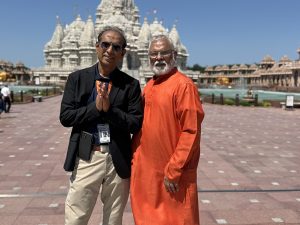
BAPS Sevak Ashokbhai with Raj Shah
The temple’s construction involved 1.9 million cubic feet of stone, sourced from around the globe, symbolizing the unity of creation.
- Marble from Greece, Italy, and Turkey
- Limestone from Bulgaria and Turkey
- Granite from India and China
- Sandstone from India
- Other decorative stones are sourced from Europe, Latin America, and Asia.
It was a deeply spiritual experience to walk through a structure that united divine purpose with global materials—each block shaped with reverence by artisans and volunteers.
The Brahma Kund: Sacred Waters of the World
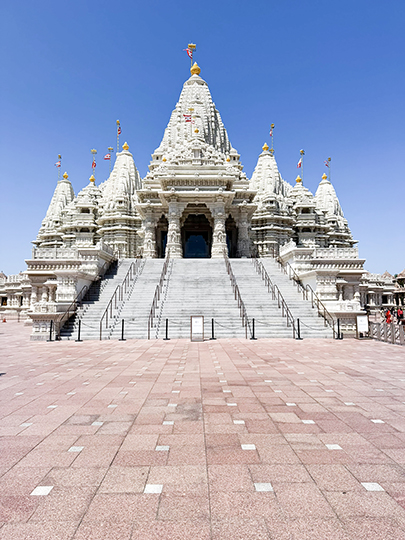 Among the many remarkable features is the Brahma Kund, a sacred stepwell constructed in traditional Indian style. What makes it special is that it contains water from over 300 bodies of water around the world, including the Ganges, Yamuna, Godavari, and holy rivers from India, as well as water from all 50 states in the U.S.
Among the many remarkable features is the Brahma Kund, a sacred stepwell constructed in traditional Indian style. What makes it special is that it contains water from over 300 bodies of water around the world, including the Ganges, Yamuna, Godavari, and holy rivers from India, as well as water from all 50 states in the U.S.
This stepwell serves as a metaphor for global unity, sanctity of water, and spiritual oneness, reminding us that the sacred resides in every corner of the earth.
Sustainable Spirituality
BAPS didn’t just build a spiritual structure—it also built an eco-conscious future. The Akshardham campus features:
- A solar farm producing clean, renewable energy
- Use of fly ash concrete to reduce environmental impact
- Over 100,000 trees and plants are growing onsite.
- Part of BAPS’s global initiative to plant over 2 million trees worldwide
This blending of spirituality with sustainability reflects a deeper Vedic principle: Vasudhaiva Kutumbakam—the world is one family.
Guided with Heart: Ashokbhai from Orlando
One of the most beautiful parts of our experience was being guided by Ashokbhai from Orlando, a long-time sevak in the BAPS community. His humility, depth of knowledge, and passion for Bhagwan Swaminarayan brought every statue and pillar to life.
Ashokbhai didn’t just walk us through the structure—he walked us through stories of seva, sacrifice, and love. He talked about how volunteers worked through heat, cold, and long hours—not for recognition, but out of reverence. His stories helped us understand that this temple wasn’t merely constructed—it was offered.
A Divine Dialogue: Meeting Pujya Chaitanyamurti Swami

Raj Shah with Pujya Chaitanyamurti Swami
During our visit, I had the rare privilege of a one-on-one meeting with Pujya Chaitanyamurti Swami ji. Before becoming a swami, he had been a very successful IT engineer—a professional life that many would envy. And yet, he left that world behind for one of selfless service.
I asked him two questions that had been on my heart:
First, how is it that BAPS inspires thousands of volunteers, including working professionals and business leaders, to take time off from their careers for seva?
Second, what motivates young Hindu children and teenagers—many born in the US—to serve so naturally and joyfully, even without being told?
Swamiji’s answer was deeply moving. He said that the credit goes entirely to the life examples of Pramukh Swami Maharaj and Mahant Swami Maharaj. Their lives have been blueprints of humility, simplicity, and tireless service. Swamiji shared that he had personally witnessed Pramukh Swami Maharaj washing dishes in the kitchen, unrecognized, unnoticed, and content.
He said, “When you witness your guru serving with such humility, you don’t require instruction.” You want to follow. You want to offer. That’s why even the youngest children rise instinctively for seva—because the seed of seva has been planted by example.”
That moment with Swamiji was a spiritual awakening in itself. It made me realize that true leadership isn’t about position—it’s about presence.
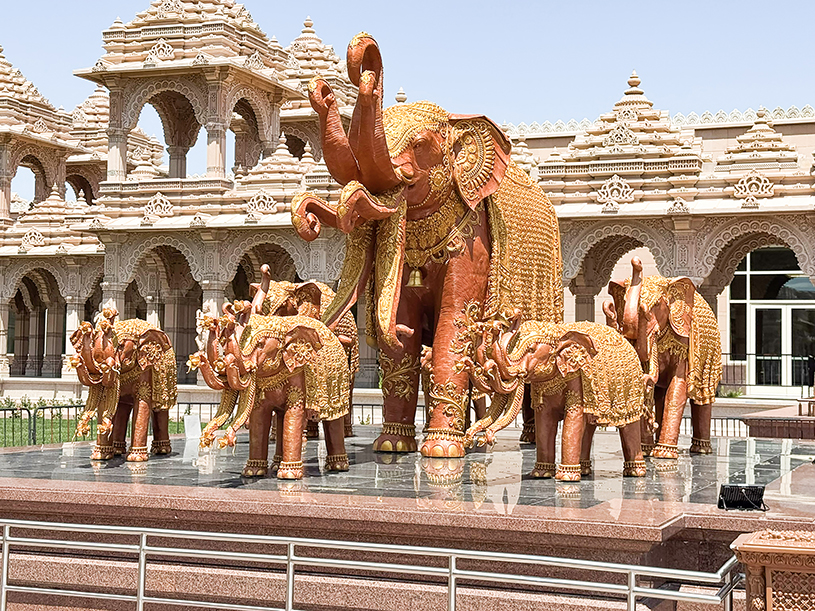
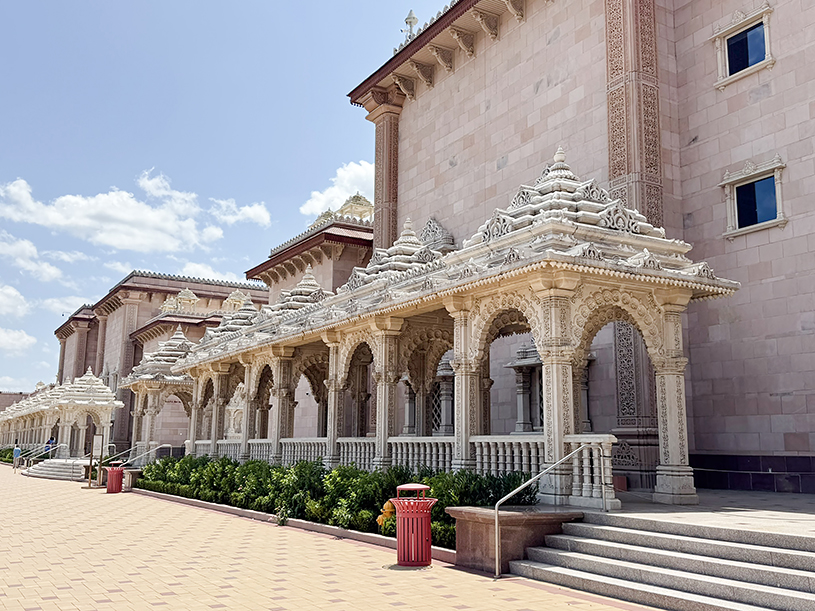
Youth Seva: Dharma in Motion
Throughout our visit, we saw dozens of young volunteers, many in their teens or early 20s, managing operations—parking, tours, hospitality, food service, audio-visual tech, and more. After Sunday sabha, no one needed to instruct them. They quietly picked up aarti thalis, prepared the prasad line, and greeted elders with folded hands.
This effort is not just volunteerism. This is dharma in motion.
In an era where faith among youth is declining worldwide, BAPS is cultivating a generation of grounded, respectful, purpose-driven Hindu youth. These young minds are not just the future—they are already leaders in spirit.
A Personal Reflection: What Akshardham Meant to Us
As Aruna and I walked through the stone corridors, stood before the towering shikhars, and sat in silence in the sanctum, we felt something that’s hard to put into words. It was more than admiration. It was oneness—with our culture, our ancestors, our dharma, and with a global Hindu community that continues to thrive through seva.
Akshardham Robbinsville is more than a temple. It is a living promise that our faith, culture, and community will continue to flourish, no matter where we are in the world.
It is a legacy in stone, a sanctuary for the soul, and a beacon for every Hindu in the diaspora—especially our children and grandchildren, who now have a sacred space that tells them, “You belong.”
Jai Swaminarayan. Jai Hindu Dharma.
And from both Aruna and me—Jai Akshardham!
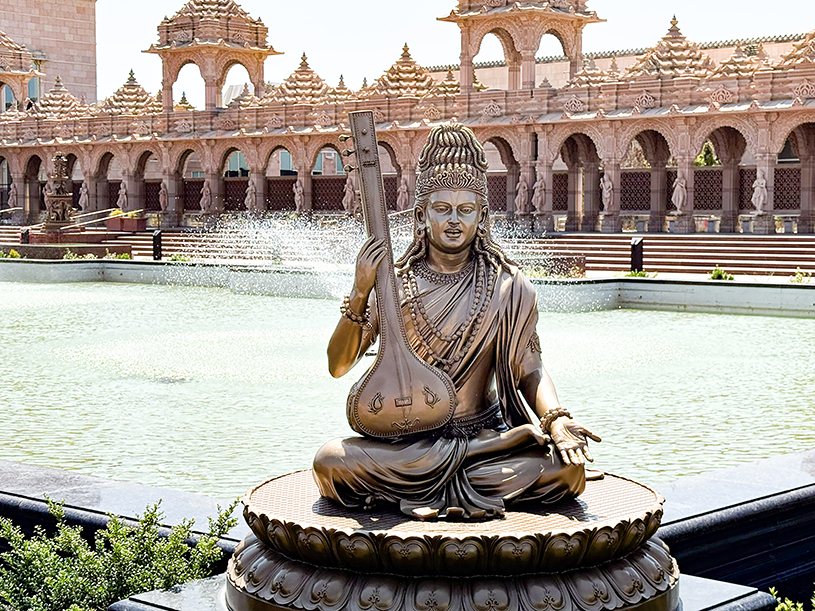
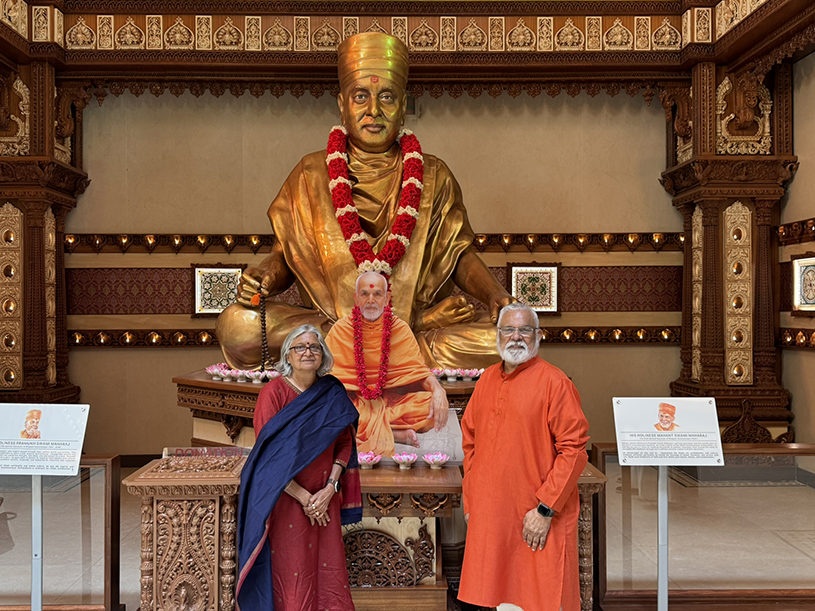
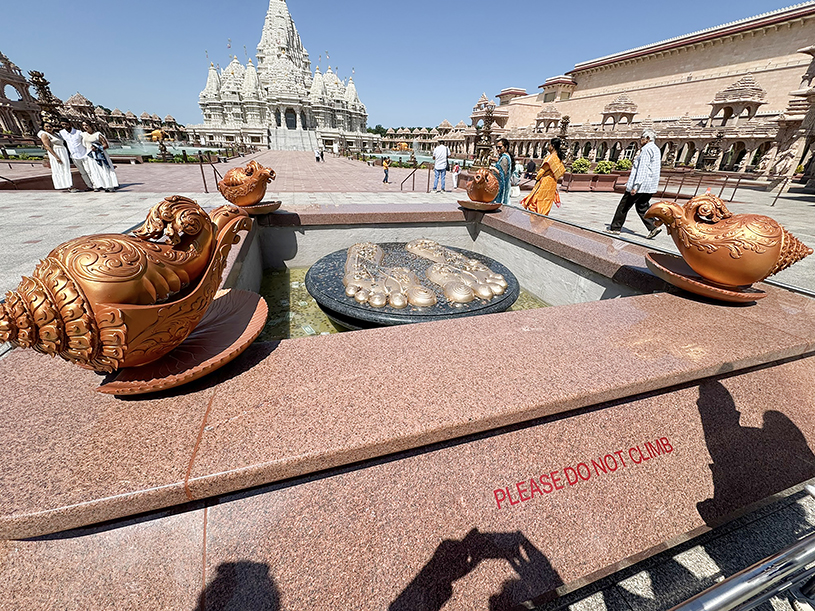
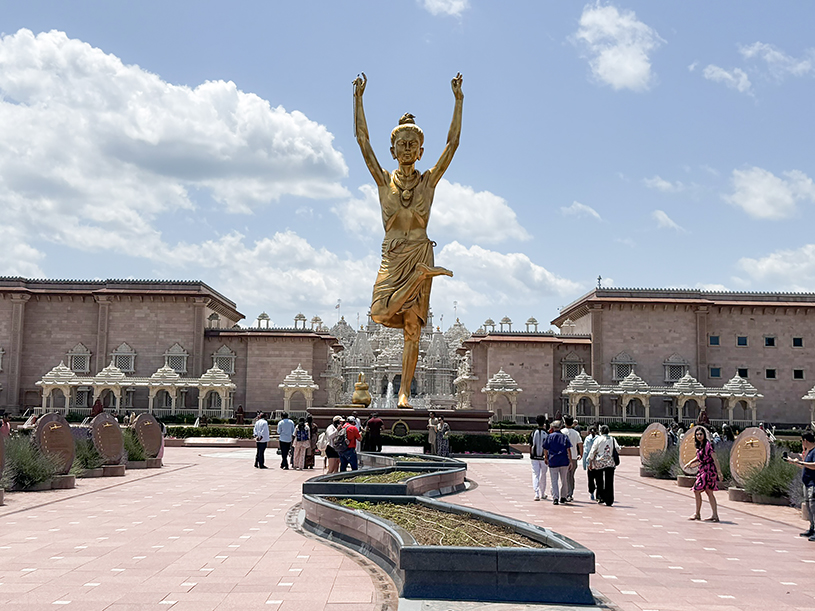


About the Author:
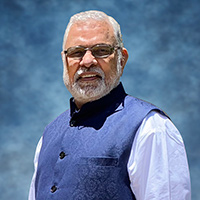
A software engineer by profession, Indian culture enthusiast, ardent promoter of hinduism, and a cancer survivor, Raj Shah is a managing editor of Desh-Videsh Magazine and co-founder of Desh Videsh Media Group. Promoting the rich culture and heritage of India and Hinduism has been his motto ever since he arrived in the US in 1969.
He has been instrumental in starting and promoting several community organizations such as the Indian Religious and Cultural Center and International Hindu University. Raj has written two books on Hinduism titled Chronology of Hinduism and Understanding Hinduism. He has also written several children books focusing on Hindu culture and religion.






















